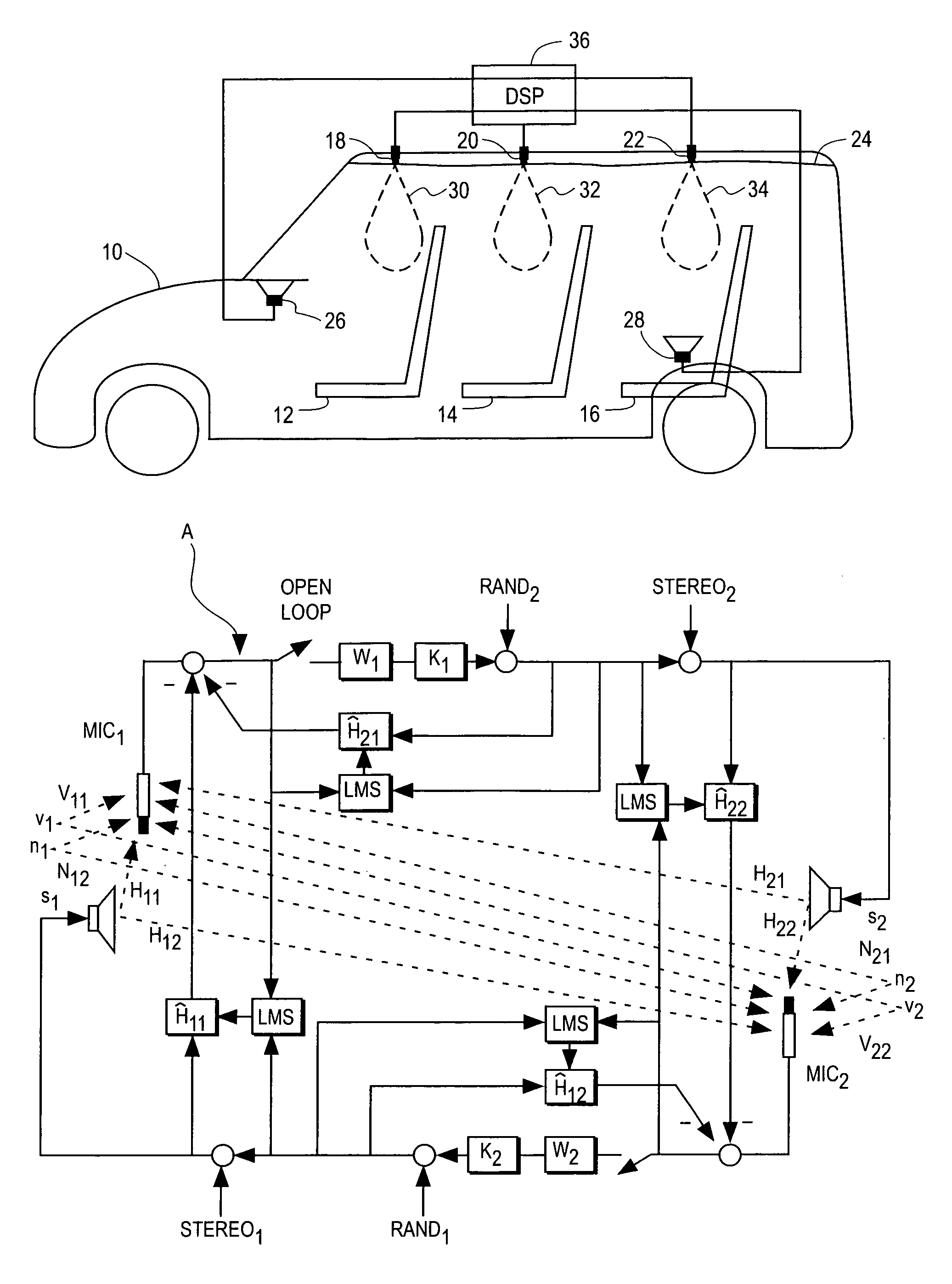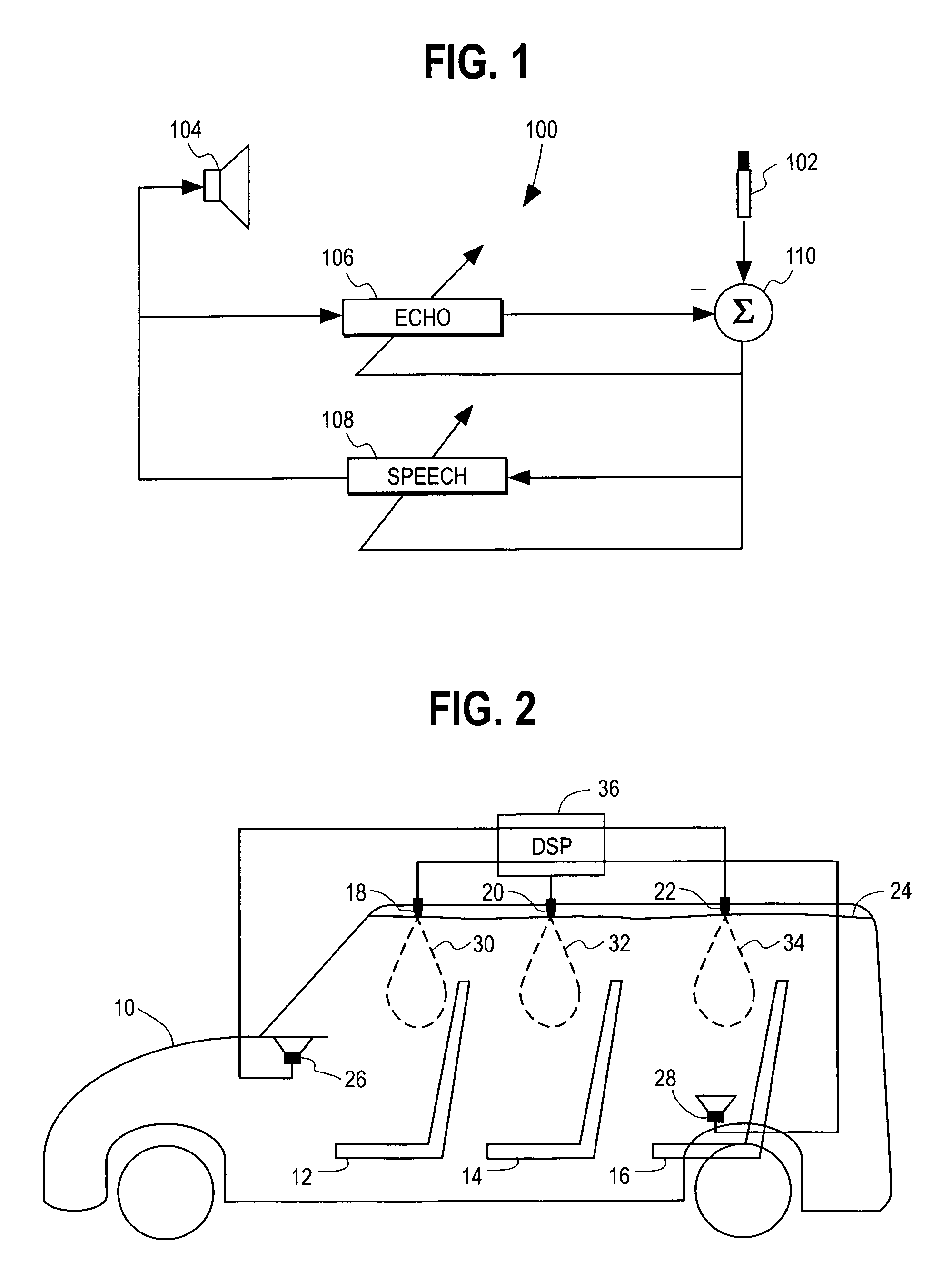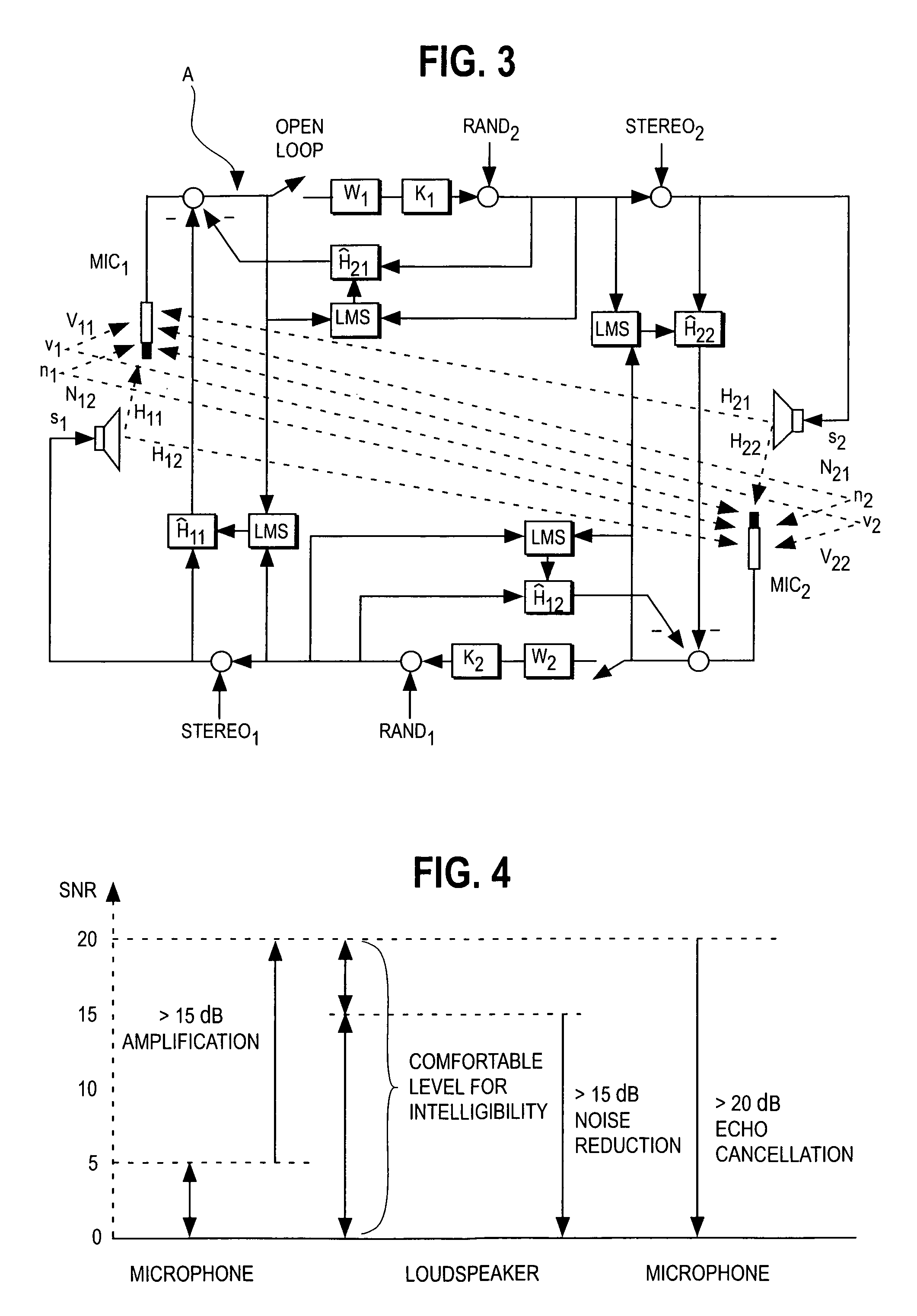Robust and reliable acoustic echo and noise cancellation system for cabin communication
a sound cancellation and cabin technology, applied in the direction of transmission, line-transmission, gain control, etc., can solve the problems of difficult communication between passengers, difficult words spoken by passengers, and difficulty in communicating among passengers in the cabin of such a vehicle, so as to improve the ease and flexibility of ccs, improve the clarity of voice spoken, and improve the effect of voice clarity
- Summary
- Abstract
- Description
- Claims
- Application Information
AI Technical Summary
Benefits of technology
Problems solved by technology
Method used
Image
Examples
Embodiment Construction
[0079]Before addressing the specific mathematical implementation of the SEF in accordance with the present invention, it is helpful to understand the context wherein it operates. FIG. 2 illustrates a first embodiment of the present invention as implemented in a mini-van 10. As shown in FIG. 2, the mini-van 10 includes a driver's seat 12 and first and second passenger seats 14, 16. Associated with each of the seats is a respective microphone 18, 20, 22 adapted to pick up the spoken voice of a passenger sitting in the respective seat. Advantageously, but not necessarily, the microphone layout may include a right and a left microphone for each seat. In developing the present invention, it has been found that it is advantageous in enhancing the clarity of the spoken voice to use two or more microphones to pick up the spoken voice from the location where it originates, e.g. the passenger or driver seat, although a single microphone for each user may be provided within the scope of the in...
PUM
 Login to View More
Login to View More Abstract
Description
Claims
Application Information
 Login to View More
Login to View More - R&D
- Intellectual Property
- Life Sciences
- Materials
- Tech Scout
- Unparalleled Data Quality
- Higher Quality Content
- 60% Fewer Hallucinations
Browse by: Latest US Patents, China's latest patents, Technical Efficacy Thesaurus, Application Domain, Technology Topic, Popular Technical Reports.
© 2025 PatSnap. All rights reserved.Legal|Privacy policy|Modern Slavery Act Transparency Statement|Sitemap|About US| Contact US: help@patsnap.com



